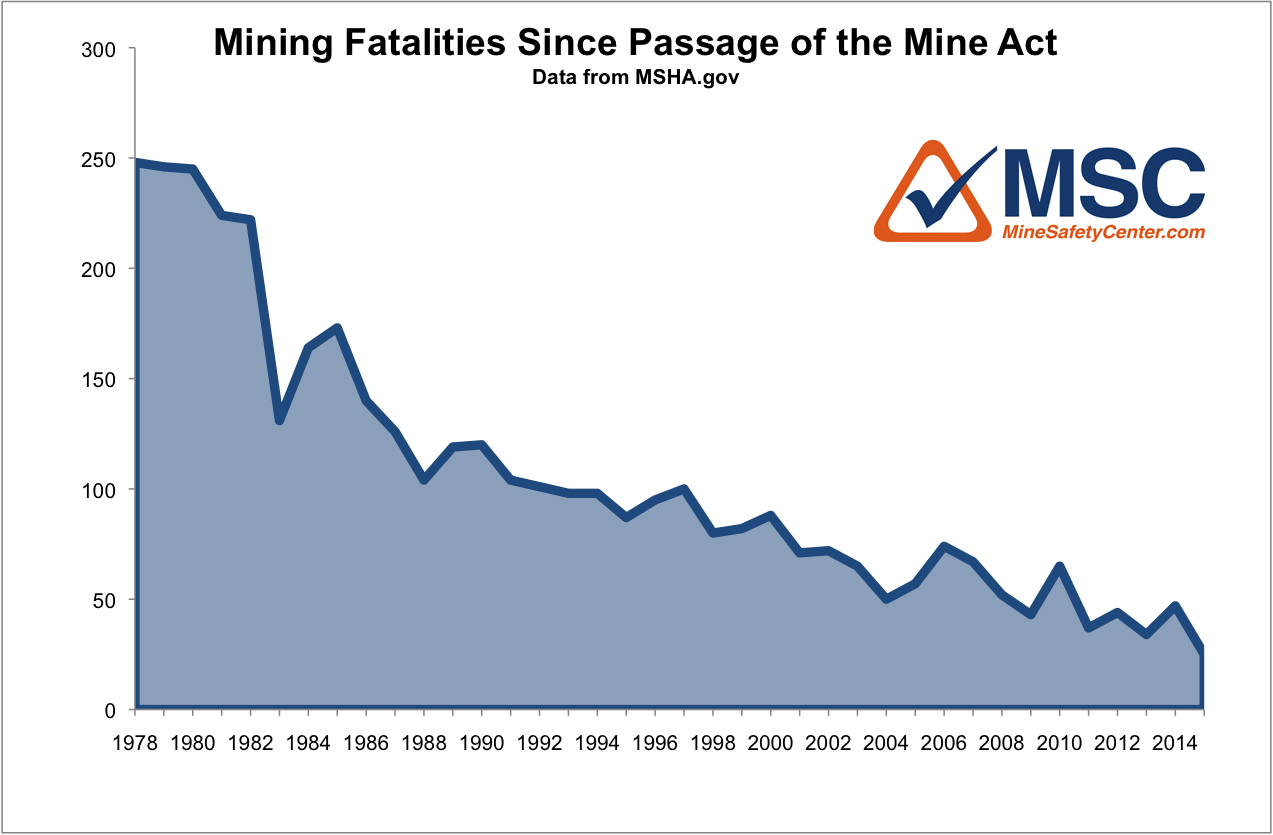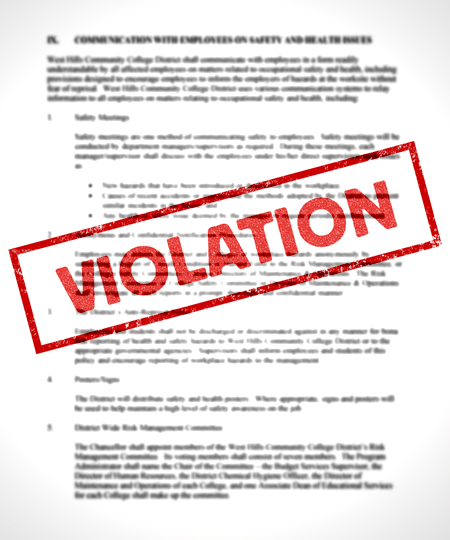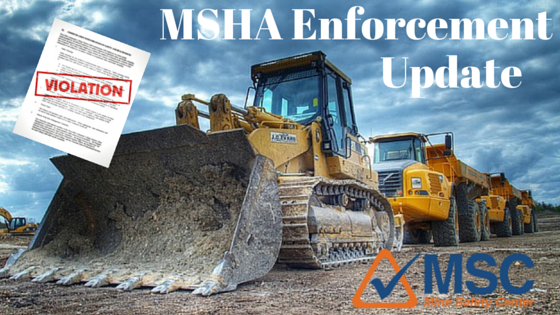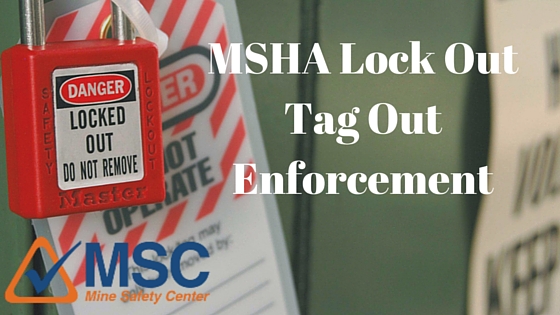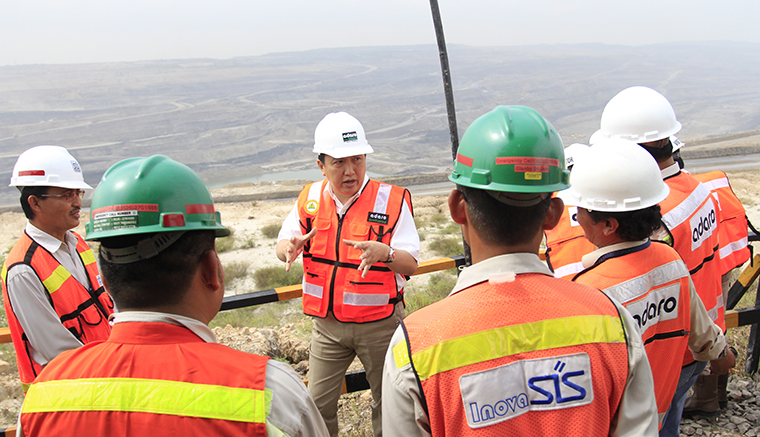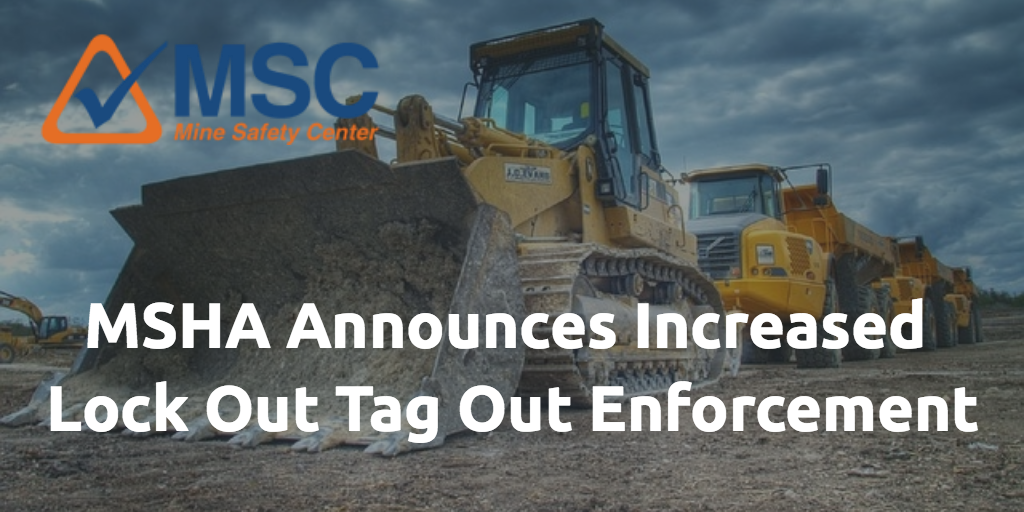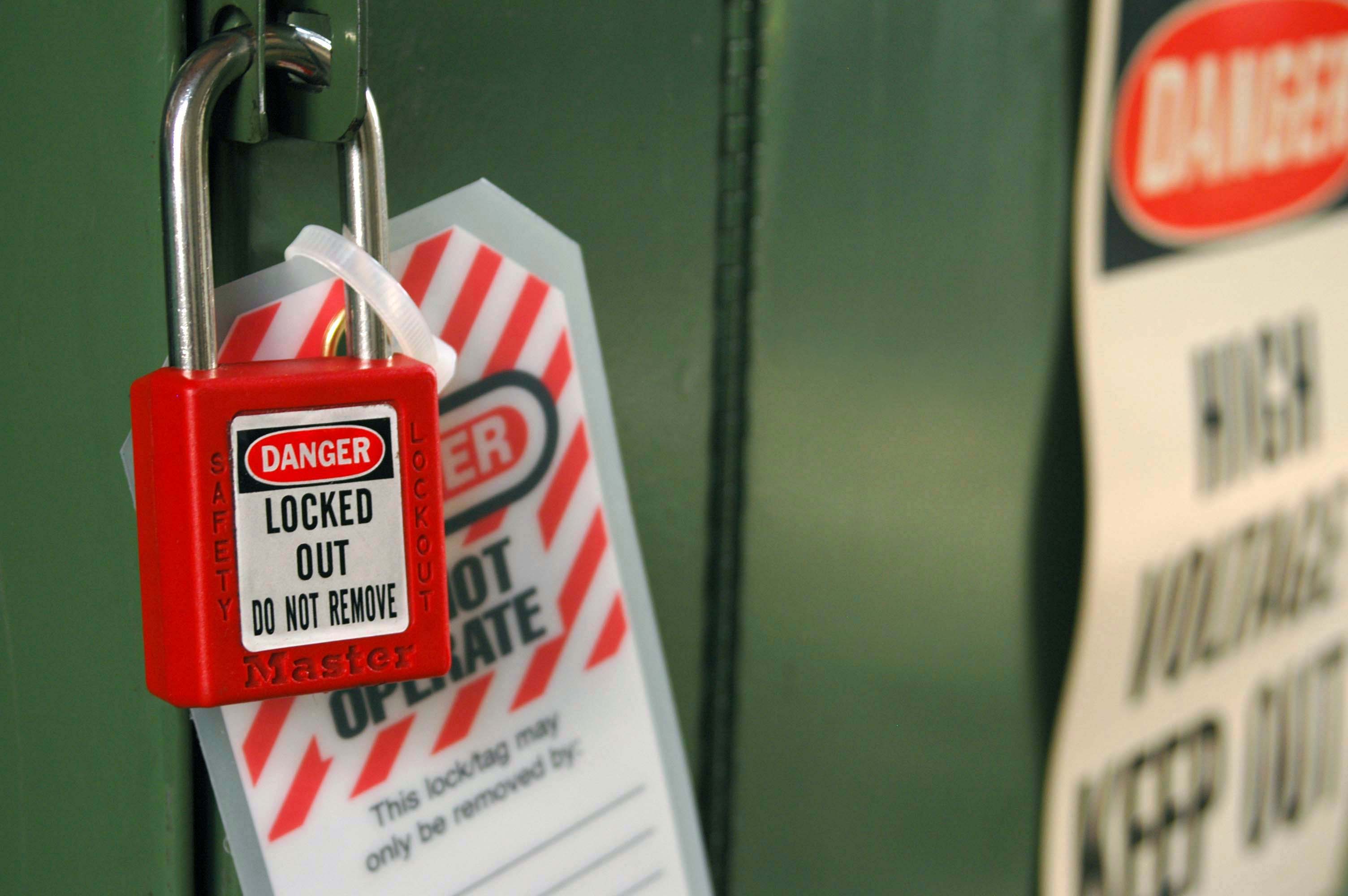“Enhanced” MSHA Rules To Live By Enforcement Begins July 1st, Will Affect Both Operators and Contractors
In a press release distributed on June 26th, MSHA announced “Enhanced” enforcement of its MSHA Rules To Live By standards.
MSHA’s news release states:
On July 1, the U.S. Department of Labor’s Mine Safety and Health Administration will begin enhanced enforcement of “Rules to Live By,” its initiative of standards commonly cited following mine deaths, and nine underground coal mine exam rule standards focused on the greatest risks to miners in underground coal mines.
While 2015 was the safest year ever for mining in the US, it appears Joe Mains is determined for one final push during the last few months of his tenure.
In the announcement of this push, Joe Mains states:
We will more extensively employ our web-based calculators on Rules to Live By and the exam rule to determine the number of respective citations and orders issued during the most recently completed inspection periods for which data are available. Inspectors will provide mine operators with a copy of the results, encouraging them to use the tools to monitor their own compliance and take action to eliminate violations. The results will be added to criteria for consideration of impact inspections, particularly targeting mines with elevated noncompliance of these standards.
You know what that means…
Enforcement initiatives are nothing new with this administration. But there are signs that this might be especially far reaching with large numbers of coal inspectors potentially flooding the M/NM sector.
“Since the [MSHA Rules To Live By] programs began, MSHA has issued more than 45,000 “significant and substantial” citations and orders for violations of Rules to Live By standards. More than 15,000 citations and orders were issued for violations of exam rule standards since implementation of the rule. These represent violations MSHA has cited during mine inspections on critical, frequent hazards that cause or contribute to fatal mining accidents. Mine operators need to conduct site examinations to find and fix conditions and hazards if miners are to be better protected,” said Mains.
That number is bound to climb steeply in the coming weeks.
Prepare Your Operation and Contractors For “Enhanced” MSHA Rules To Live By Enforcement
Go over your operation with a fine-toothed comb, obviously with a heavy focus on the Rules To Live By Enforcement Standards. Here is a link to the MSHA Rules To Live By standards. And here is an MSHA document outlining what inspectors look for when focusing on Rules To Live By standards.
But you should also go through your paperwork. Make sure you have the fully completed New Miner training certificate for every employee. Make sure every employee is task trained for every job they conduct and tool they use to complete their work.
If you have any contractors working on site make sure they’re informed. I’d recommend doing an audit on their MSHA compliance yourself. That way if you find anything, they have time to correct the issue before MSHA shows up.
Dedicate significant time to this audit. A thorough self-inspection could save you a lot of time and money down the road.
And if MSHA does show up at your operation watch out for the tricky tactic I wrote about last week that some MSHA inspectors use to triple MSHA fines.
What Else Can You Do?
Forward this information to your colleagues. Everyone needs as much time as possible to audit their operations and get prepared.
Here is the entire press release:
MSHA launches enhanced Rules To Live By enforcement to encourage better examinations by industry’s operators
ARLINGTON, Va. – On July 1, the U.S. Department of Labor’s Mine Safety and Health Administration will begin enhanced enforcement of “Rules to Live By,” its initiative of standards commonly cited following mine deaths, and nine underground coal mine exam rule standards focused on the greatest risks to miners in underground coal mines. The agency announced these measures on May 12, 2016, at a mining industry stakeholder meeting in Arlington.
MSHA Safety Enforcement Alert Announces Vague Initiative
After last week’s serious incident, today brings another MSHA safety enforcement announcement and boy is it broad. MSHA’s M/NM Administrator Neal Merrifield begins the announcement:
Since 2011, 16 metal and nonmetal miners have died in accidents involving machinery and non-haulage mobile and quarry equipment, and many more have been seriously injured or disabled. Of the 16 persons fatally injured, six were supervisors and three were contractors. Seven miners died when they were struck by the equipment they or a co-worker were operating, four miners drowned when their equipment ran into or overturned into water, and five more died when they were caught in crushers, on drill steel or between reciprocating machinery. The equipment involved represented a wide variety of mining equipment: drills, dozers, excavators, graders, dredges and crushers… MSHA plans again this month to continue walk and talks at mine sites and again enlist the partnership of mines, miners and mining industry groups in the effort to raise safety consciousness.
I’ll repeat that, “drills, dozers, excavators, graders, dredges, and crushers.” MSHA is essentially announcing close inspections of all machinery and equipment used in the process of mining. Their stated purpose is admirable as always, but you have to consider MSHA’s previous methods of “raising awareness.” Recent history tells us it will likely involve increased inspections, citations, and fines.
This is the 5th announcement of increased MSHA safety enforcement in just the past few months. MSHA has announced an enforcement “surge” on M/NM mines which includes transferring inspectors from coal to M/NM, an emphasis on confined spaces and Lock Out, Tag Out, Try Out procedures, and Part 50 injury reporting. They have also been given funding to hire more MSHA inspectors.
Merrifield goes on to offer some best practices:
MSHA standards require operators to maintain control of mobile equipment while it is in motion, and to operate at speeds consistent with conditions of mine roadways, tracks, grades, clearance, visibility and traffic. When mobile equipment is not in motion, it must be stopped in a safe location and when not attended, parked in a manner that prevents it from moving and becoming a hazard to the operator or other miners. In addition, mine supervisors and equipment operators need to continuously monitor and maintain roadways and berms and operate mobile equipment in a controlled, safe manner. When operating excavators, position the as far from the water’s edge as feasible on firm, stable ground. Don’t traverse unstable ground above a highwall and stay off and away from over-steepened stockpiles until they can be made safe.
You can download today’s Machinery and Equipment Hazards Alert here.
Considering the number of recent MSHA safety enforcement alerts, 2016 is going to be a very busy year for mine managers, safety professionals, and mine contractors. Prepare your company for MSHA compliance in 2016. MSC expert and Ex-MSHA inspector, Kim Redding, has a free MSHA compliance video series. Learn MSHA tips from a former MSHA inspector.
MSHA Lock Out Tag Out Enforcement Update
More information has come out since last week’s MSHA Lock Out Tag Out emphasis announcement.
MSHA inspectors will focus heavily on locking out energy sources before performing any maintenance or repairs. In particular, MSHA singled out 1 mechanical lock out standard and three electrical lock out standards that will be emphasized:
Mechanical Lock Out
- 30 CFR §56/57.14105 – Procedures during repairs or maintenance
Electrical Lock Out
- 30 CFR §56/57.12006 – Distribution boxes
- 30 CFR §56/57.12016 – Work on electrically powered equipment
- 30 CFR §56/57.12017 – Work on power circuits
MSHA Lock Out Tag Out Inspections
There is only one way MSHA inspectors can check if a company is using proper lock out tag out procedures. When the MSHA inspector shows up (unannounced as always) he will go directly to the motor control center. If any maintenance is in progress he’ll be checking for:
- All energy sources isolated and locked out
- An individual lock for each person performing the maintenance
- A lock for which only one person has the key
- A tag with each person’s name and the date on each lock or
- One tag with the name of every person performing maintenance and the date
Isolating and locking out all energy sources seems to be the largest point of emphasis. In addition to what you’re working on, you must lock out any parts or machines or material that could potentially injure. For example, if you’re working on a cone crusher you must lock out the crusher itself. But you also need to lock out the belts going to and from the crusher. There’s a very good example of this in MSC’s Rules To Live By section which is available in our free trial.
Lock Out, Tag Out, Try Out – Every Time
In a great post, ISHN magazine outlined the most common problems with Lock Out Tag Out. Even after 16 years it’s spot on. I would only add one point. While “trying out” isn’t required by law, it is a best practice. You can’t truly know something is locked out until you’ve tried to turn it on and nothing happens. As MSHA pointed out in their announcement, “it’s not locked out until you’ve tried it out.”
Why do we try out? Our expert Kim Redding was recently consulting at a Cement plant where they needed to replace a belt. Every energy source to the conveyor was identified and locked out; not an easy task when there are over 5,000 breakers in one breaker box. The employees followed every regulation and protocol to the letter. But what happened when they tested their lock out? The belt turned on. Someone had mislabeled breaker, a mistake that seems small until someone’s life is on the line. We all know what could have happened if those workers hadn’t tested their lock out.
Including where you’re working, either the location or equipment, on tags is another best practice. You’re not required by law to include this information, but it’s a very good idea. It only takes a few extra seconds and could prevent a serious accident.
MSHA lock out tag out enforcement will increase in the coming months. Are you ready? To prepare, you can take our free Lock Out Tag Out module.
Lock Out Tag Out Procedures Will See Heightened Emphasis from MSHA in 2016
Lock Out Tag Out procedures have been an essential part of mine safety for years. This morning, Neal Merrifield of MSHA took the opportunity to reiterate “how important it is to develop and implement an effective mine-specific Lock – Tag – Try program.”
He goes on to say, “since 2005, 28 metal and nonmetal miners have died in accidents in which electrical power was not disconnected and locked out or other energy sources were not controlled before work was begun on power circuits or mechanical equipment.”
“MSHA standards require that before working on electrical circuits, power must be disconnected, switches locked out and warning notices posted and signed by those performing the work. In addition, power to machinery or equipment must be off and the machinery or equipment blocked against hazardous motion before beginning repairs or maintenance.”
Expect Increased Lock Out Tag Out Try Out Enforcement
“MSHA will stress the importance of concentrating on effective lockout procedures by focusing additional resources on increased enforcement and education and outreach, including walk-and-talks….Metal and Nonmetal inspectors and Educational Field and Small Mines Services personnel will be visiting mines, discussing safe work practices with miners and reminding everyone to maintain their focus on safety.”
Lock Out Tag Out Procedures Must be in Your Standard Operating Procedures.
Lock Out Tag Out Procedures should really be known as Lock Out Tag Out Try Out. No machine is truly tagged out until you have tried to turn it on and nothing happens. MSHA is re-emphasizing their effort to make sure every person on a mine tries out a machine before they consider it safe to conduct work. Lock Out Tag Out Try Out should be an integral part of every company’s standard operating procedures.
What This Means For 2016
As we all know, MSHA is much more inclined to increase enforcement and fines than to educate. I’ve discussed MSHA’s inclination to attribute decreased fatalities with the recent increase in fines.
Review your Lock Out Tag Out Try Out procedures. Do they need updating? Now would be a great time to focus a morning safety meeting or toolbox talk on LOTOTO.
Make sure you emphasize Lock Out Tag Out Try Out in your MSHA training this year.
Stay safe everyone.
MSHA Confined Space Enforcement To Increase Dramatically
I just received an alert on MSHA confined space enforcement that needed to be passed along. Due to recent serious injuries and fatalities MSHA will be “placing special emphasis on enforcing its standards related to entering bins, hoppers, silos, tanks, and surge piles… by focusing additional resources on increased enforcement attention, education and outreach, including walk-and-talks,” said Neal Merrifield.
This MSHA confined space enforcement emphasis is just the latest in a long line of MSHA attempts to increase mine safety through fines and enforcement. The mining community needs to prepare for the imminent increase in MSHA enforcement. To help mines and mine contractors get ready and keep workers safe we’re offering our full Intro to MSHA Confined Space training for free.
The following is the full letter regarding the MSHA Confined Space Entry Alert from MSHA M/NM Administrator Neal Merrifield. All emphasis is added.
Unsafe work in confined spaces has led to miner deaths and injuries in the metal and
nonmetal mining industry. Recent tragic incidents include: a fatality while cleaning the
inside of a tanker railcar and a miner being severely burned during maintenance inside
a baghouse screw conveyor hopper. To address these regrettable occurrences and
help prevent similar instances in the future, MSHA will be placing special emphasis on
enforcing its standards related to entering bins, hoppers, silos, tanks, and surge piles.
MSHA and the Industrial Minerals Association-North America (IMA-NA) have engaged
the issue of confined spaces as a project within the Alliance between the two
organizations. We recommend conducting a hazard assessment and implementing a
permitting system as part of a safe entry standard operating procedure (SOP).
Many mining and milling workplaces contain areas that are considered “confined
spaces” because, while they are not necessarily designed for people, they are large
enough for workers to enter and perform certain jobs. A confined space also has limited
or restricted means for entry or exit and is not designed for continuous occupancy.
Confined spaces include, but are not limited to, tanks, vessels, silos, storage bins,
hoppers, vaults, pits, manholes, tunnels, equipment housings, ductwork, pipelines, etc.
Metal and Nonmetal (MNM) regulations related to confined space that MSHA enforces
include: 30 CFR §§56/57.5001(a); 30 CFR §§56/57.5002; 30 CFR §§56/57.5005(c);
30 CFR §57.5015; 30 CFR §§56/57.14105; 30 CFR §§56/57.15005; and
30 CFR §§56/57.16002.
These standards regulate hazardous atmospheres; material that has the potential to
engulf an entrant; walls that converge inward or floors that slope downward and taper
into a smaller area which could trap or asphyxiate an entrant; and any other recognized
safety or health hazard, such as unguarded machinery, exposed live electrical wires, or
high heat.
Because confined spaces are potentially dangerous, employers should evaluate all
confined spaces in which their employees work to determine whether hazards exist or
whether the work to be done in the space can create hazards. MSHA will place special
emphasis on confined spaces over the next several months by focusing additional
resources on increased enforcement attention, education and outreach, including walk-
and-talks. We are encouraging the mining industry to do the same. MSHA will provide
the mining industry with additional information on the importance of having an effective
MSHA Confined Space Entry program. Please make sure that information gets distributed.
MNM inspectors, joined by Coal inspectors and Educational Field and Small Mines
Services personnel will be visiting mines, calling attention to these potentially hazardous
conditions and discussing safe work practices with miners. Please join MSHA and
IMA-NA in this special safety outreach and help us spread the word to the miners at
your operations. This is the time to be proactive. Assure that an effective Confined
Space Entry program is implemented, that miners are trained on program specifics and
are task trained to recognize and avoid hazards, so they can go home safe and healthy
at the end of each shift.
A link follows to an MSHA Confined Space Entry Alert recently published on MSHA’s website:
http://www.msha.gov/Alerts/confined-space-entry-ha1109.pdf. Also, for more
information on the confined space mining deaths that have occurred since October 2013 and
Please use the photos and descriptions to prompt discussions about fatalities and how to prevent them.
Standard Operating Procedures
It’s the worst-case scenario. Someone has been injured at a job and your employees need help. But you’re working a mine on this job; a mine with multiple locations, different addresses with the same name and no Standard Operating Procedures to guide you.
Your workers have 911 on the line, ready to help. But they don’t know which site they’re on or how to get to their location. They have an injured man’s rescue at their beck and call but no way to help.
Sound far-fetched? This would never happen at one of your jobs? This unfortunate event happened to one of my contracting clients. 2 of their employees had 911 on the line. But instead of being able to assist in his rescue, they witnessed a man die of a heart attack right in front of them.
What could these contractors have done to prevent this tragedy? They needed directions to their location of the physical address of the mine site to get help from Emergency Services. Anyone in the company could have easily gotten this information by asking a few simple questions before they started work.
Is using a map app on your smart phone an option? That’s a risk I’m not willing to take. Many mines are in extremely remote areas. Reception can be spotty or non-existent. Why chance it when you can easily avoid a tragedy by asking 1 question?
Can’t 911 just track your phone’s GPS location like in a TV crime show? No, there are Federal privacy laws in place that prevent Emergency Response from accessing GPS information. If you can’t articulate your location, there’s nothing a 911 operator can do.
One advantage these contractors had was cell phone reception. But what if they didn’t? Would they have known where to get a signal? Or have another form of communication available like a CB radio?
Standard Operating Procedures, or SOPs, are a safety net in place for that worst-case scenario. So I need to ask; do you have standard operating procedures in place for your mine jobs? Do you have emergency procedures for each mine you service?
If you don’t you’re not alone. But these simple procedures on a checklist can save a life.
What are the standard operating procedures your company must have in place? I’ve designed a 3 page standard operating procedure template checklist available as a free download as part of our Contractor Success Kit.
There may be procedures that don’t apply to your company and that’s ok. This checklist is meant to be a starting point, a framework to build on. Designing standard operating procedures is about asking the right questions so you can be prepared if something does go wrong.
The worst-case scenarios may never happen, and we hope they never do. But if a tragedy does occur and you’re in a position to make a difference, don’t you want to be ready? You can. All it takes is a little time and thought to implement standard operating procedures at your company today.
MSHA Part 50 Compliance Will Be Heavily Scrutinized
MSHA Part 50 enforcement will be significantly increased starting today. In a previous blog we discussed how MSHA will increase the number of inspectors and inspections at metal/non-metal mines with a heightened focus on smaller “mom and pop” mines.
In recent weeks, MSHA Part 50 enforcement of Accident Reporting has also increased. MSHA believes there has been underreporting of accidents and injuries. To back up these claims, inspectors have begun to go through workman’s compensation paperwork. If MSHA finds a serious accident that wasn’t reported in 15 minutes they will issue a ticket of $5000 to $60,000.
What accidents or injuries fall under the MSHA Part 50 Immediate notification requirement? According to 30 C.F.R. § 50.10 operators “shall immediately contact MSHA at once without delay and within 15 minutes at the toll-free number, 1-800-746-1553, once the operator knows or should know that an accident has occurred involving:
- A death of an individual at the mine;
- An injury of an individual at the mine which has a reasonable potential to cause death;
- An entrapment of an individual at the mine which has a reasonable potential to cause death; or
- Any other accident.
The language “any other accident” is ambiguous but MSHA goes on to define an accident as:
- A death of an individual at a mine;
- An injury to an individual at a mine, which has a reasonable potential to cause death;
- An entrapment of an individual for more than 30 minutes or which has a reasonable potential to cause death;
- An unplanned inundation of a mine by a liquid or gas;
- An unplanned ignition or explosion of gas or dust;
- In underground mines, an unplanned fire not extinguished within 10 minutes of discovery; in surface mines and surface areas of underground mines, an unplanned fire not extinguished within 30 minutes of discovery;
- An unplanned ignition or explosion of a blasting agent or an explosive;
- An unplanned roof fall at or above the anchorage zone in active workings where roof bolts are in use; or, an unplanned roof or rib fall in active workings that impairs ventilation or impedes passage;
- A coal or rock outburst that causes withdrawal of miners or which disrupts regular mining activity for more than one hour;
- An unstable condition at an impoundment, refuse pile, or culm bank which requires emergency action in order to prevent failure, or which causes individuals to evacuate an area; or, failure of an impoundment, refuse pile, or culm bank;
- Damage to hoisting equipment in a shaft or slope which endangers an individual or which interferes with use of the equipment for more than thirty minutes; and
- An event at a mine which causes death or bodily injury to an individual not at the mine at the time the event occurs.
Additionally, “injuries not related to one of the twelve types of accidents mentioned in 30 C.F.R. MSHA Part 50 (50.2(h)), such as ordinary sprains, strains, minor cuts, minor burns, bruises or other injuries that are not life-threatening, do not require immediate notification. These types of injuries should be reported via the 7000-1 form under MSHA Part 50 regulations.”
What can you do to stay MSHA compliant and protect your company?
First and foremost everyone on your site needs to be prepared. Put standard operating procedures in place and practice those procedures. Everyone on site, including contractors, must know the physical address of the mine so they can call 911 and bring help as soon as possible.
Second, all employees must know the next steps to take in the event of an accident. Do they have first aid training? Do they have a first aid kit? Will they be able to care for someone until paramedics arrive?
Finally, you need to follow regulations and report all accidents as defined by MSHA Part 50 within 15 minutes of their occurrence.
If you have questions regarding accidents you may have had, you can email MSC at sales@minesafetycenter.com or call 602-956-6959 ext. 23. We may be able to help.
Mine Safety Enforcement To Be “Beefed Up”

In the wake of five metal / non-metal fatalities in the last three weeks, including 3 on August 3rd, the Mine Safety and Health Administration, or MSHA, announced that inspectors will step up enforcement beginning next week.
During a hastily arranged conference call of stakeholders Wednesday, agency administrator Joe Main lamented the fact that, since October, 2014, 38 miners and 14 contractors have lost their lives at their workplaces.
During the call, MNM administrator Neal Merrifield said that 17 coal inspectors are being switched over to work in the MNM segment. Also, Merrifield has authorized the hiring of an additional 21 inspectors. MSHA also indicated that those mines found to not be following mine safety best practices associated with the standards found to have been relevant in the fatalities will be subject to impact inspections. At the call’s conclusion, Main said he realizes that many small mines are involved in the problem. This would indicate a heightened focus on “mom and pop” outfits.
In a letter to the mining community, MSHA’s Joe Main said, “To reverse this unacceptable trend, the Mine Safety and Health Administration is stepping up enforcement efforts and intensifying outreach and education throughout the country.”
Key points:
- MSHA will increase the number of inspectors and inspections at metal/non-metal mines, beginning on 10/1. These will include “walk & talk” meetings with operators and miners.
- Heightened focus on smaller “mom and pop” mines
- MSHA emphasizes the need for thorough workplace exams each shift that are performed by experienced and trained examiners, per the recent program policy letter.
- Inspectors will be closely scrutinizing workplace exam paperwork.
- MSHA re-iterates the importance of safety and health programs, per Joe Main’s May 21 letter to the mining community.


